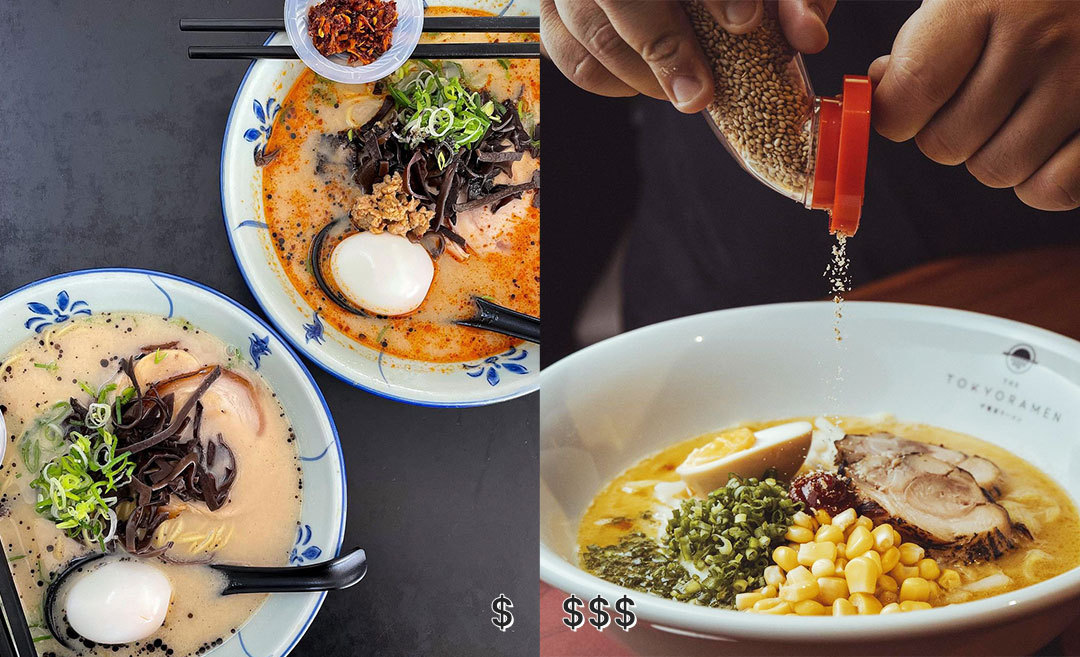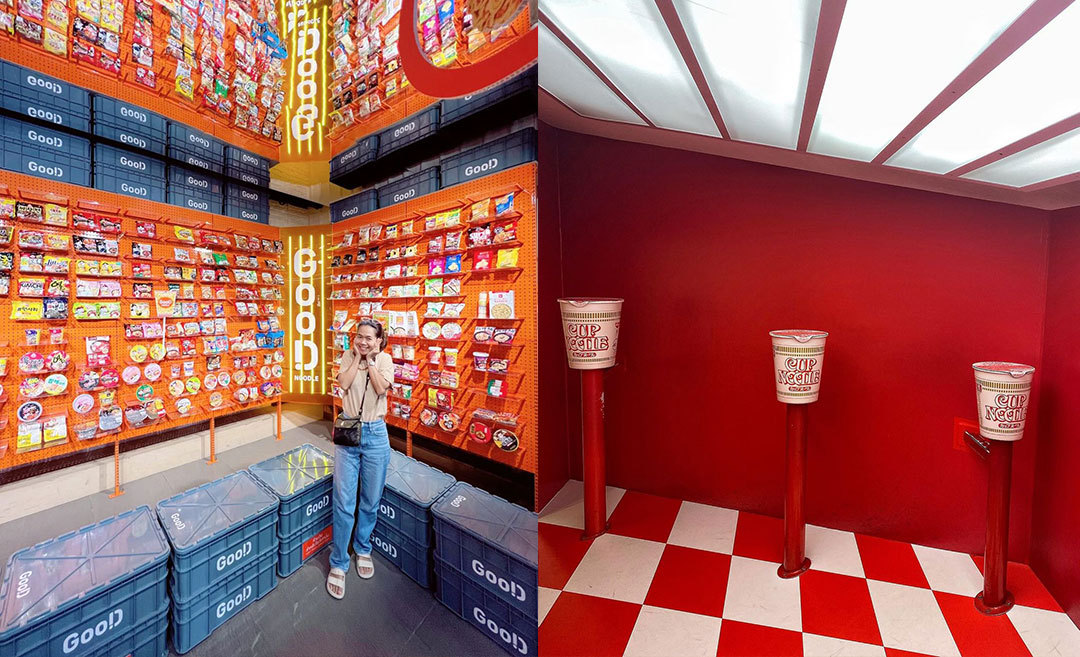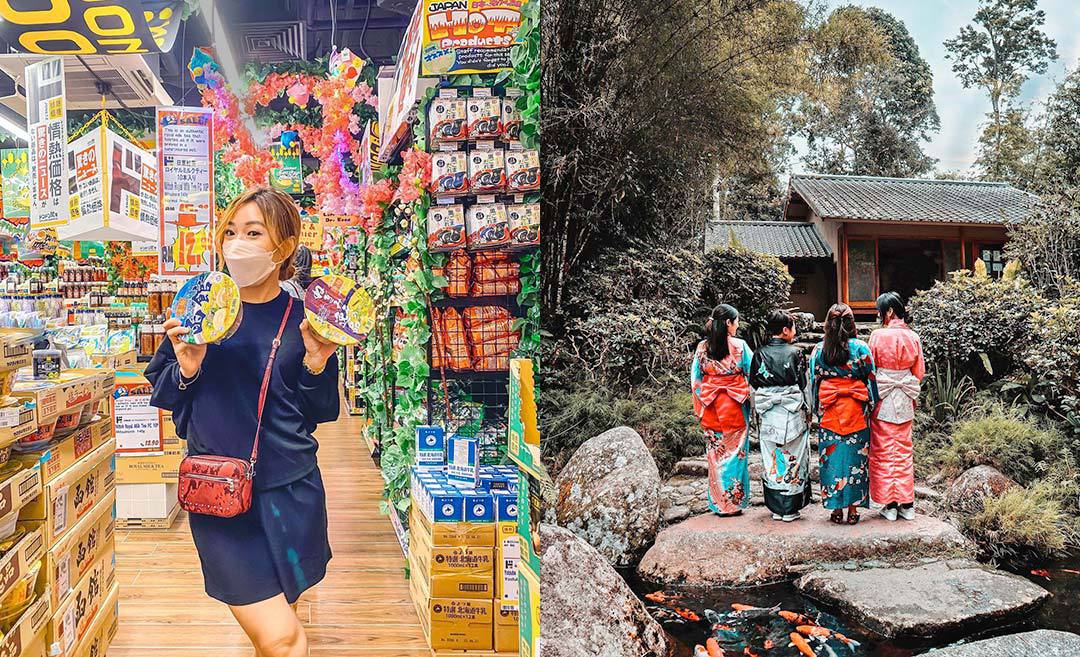Ramen has a long and storied history in Japan. It first gained popularity in the late 19th century as a Chinese dish catered to the working class.
From there, it evolved rapidly, with indigenous ramen styles emerging in the early Showa era as more and more people took to the noodle soup in its adopted homeland.
Ramen is now regarded as an indispensable part of the country’s culinary heritage and has become one of Japan’s most recognisable dishes, along with sushi, sashimi, yakitori, teppanyaki and the Portuguese-inspired tempura.
1884: Ramen is first sold
Yowaken, a restaurant in Hakodate in northern Hokkaido island, became the first restaurant to serve something similar to ramen.
Known simply as ‘Chinese soba’, this shio or salt-based ancestor to modern ramen was a success and quickly spread via the Chinese community to the rest of the country.
Where to try: Jiyoken, Hakodate Ramen Horan
1910: First dedicated ramen shop opens
Kanichi Ozaki, assisted by 12 chefs handpicked from Yokohama’s Chinatown, opens Japan’s first ramen shop, Rairaiken, in Tokyo’s busy Asakusa district, attracting up to 3,000 customers daily with their signature shoyu (soya sauce) ramen.
Rairaiken ceased operations during World War II, reopening in Yaesu in 1954 before moving to Kanda in 1965 and finally closing for good in 1976.
The Shin-Yokohama Ramen Museum resurrects the name in 2020. To recreate the original flavour of Rairaiken’s ramen, the museum conducts intensive research with the assistance of Ozaki’s grandson and great-grandson, Kunio Takahashi and Yusaku Takahashi.
Where to try: Shin-Yokohama Ramen Museum
1927: Kitakata ramen is invented
Genraikan in Kitakata, Fukushima province, pioneers a pork shoyu ramen named after the city.
While not well-known outside of Japan, Kitakata ramen has become the third-most-popular ramen style domestically after tonkatsu ramen and Sapporo’s miso ramen. Today, Kitakata has the highest number of ramen establishments per capita in the country.
Where to try: Bannai Shokudo, Ramen Ippei
1937: Tonkotsu ramen is invented
Tonkotsu ramen, made by boiling pork bones for hours, was invented in Kurume, a city in Kyushu’s Fukuoka prefecture.
Tokio Miyamoto, a yatai (street stall) vendor who may have been inspired by the milky white broth of Nagasaki city’s iconic champon noodle soup, created this early version of the pork bone broth.
It refined in 1947 when Katsuni Sugino, founder of the Sankyu ramen shop, leaves his mother in charge of making the broth in his absence, only to find it overcooked – but delicious – upon his return.
Tonkotsu ramen is now the most popular style of ramen overseas and arguably the most familiar to international visitors to Japan.
Where to try: Hakata Issou, ShinShin Hakata Ramen, Hakata Daruma
1953: Miso ramen is invented
Up north in Sapporo, Aji no Sanpei became the first ramen shop to add miso to the mix.
According to local lore, this style was born when an inebriated (and presumably hungry) customer requested that noodles be added to his miso soup.
Miso ramen eventually becomes one of the three main types of ramen, along with shoyu and shio. It’s synonymous with the city of Sapporo and frequently showcases a variety of local produce, such as corn and butter.
Where to try: Sapporo Junren, Sumire Nakanoshima, Aji no Sanpei
1954: Abura soba is invented
Abura soba, a no-broth version of ramen, was invented at Chinchintei in Musashino, a suburb in western Tokyo, in 1954.
The simple dish of dry noodles tossed in abura (oil) and tare seasoning provides a cheap, filling meal for customers, mainly day labourers who enjoy drinking at the shop after work.
Where to try: Tokyo Abura Soba Ginza, Miharu Ebisu, Chinchintei
1955: Tsukemen is invented
Tsukemen was invented by Kazuo Yamagishi, a chef at Tokyo’s Taishoken ramen shop.
Yamagishi, known as the ‘God of Ramen’, made the dipping noodle dish with a refreshing soya sauce and sweet vinegar broth after seeing shop staff dunk cold ramen noodles into hot soup.
During the tsukemen boom of the 2000s, new purveyors of the dish started to serve thicker, more intense broths to go with the noodles – the style that’s most common today.
Where to try: Fuunji, Rokurinsha, Menya Itto, Taishoken
1958: Instant ramen is invented
Spurred by Japan’s postwar rice shortage, Taiwanese-Japanese inventor and Nissin Foods founder Momofuku Ando developed Chicken Ramen, the world’s first pre-cooked instant noodles.
The convenient product, which only requires hot water to prepare, sold well despite retailing at 35 yen – about six times the price of fresh noodles.
Where to try: Anywhere in the world
1968: Ramen Jiro makes its debut
Ramen Jiro, known for its massive portions, thick-cut chashu, and a heaping mound of cabbage and bean sprouts, made its debut in Tokyo’s Meguro ward before moving to Mita, near Keio University.
The budget-friendly student favourite, founded by Takumi Yamada, quickly garnered cult status, with a host of fans and franchisees paying homage to its style all across Greater Tokyo.
Where to try: Ramen Jiro Mita Honten
1971: Cup Noodles is invented
After seeing purchasers at an exhibition in Los Angeles eat instant noodles with paper cups and forks, Nissin’s Ando came up with the idea for Cup Noodles.
By using a styrofoam cup as a container, he made instant ramen even more convenient and easy to eat. The product became the global phenomenon it is now.
Its popularity later spawns the Cup Noodles Museum in Osaka and Yokohama, where you can create your own original Cup Noodles.
Where to try: Anywhere in the world
1974: Iekei ramen is invented
In Yokohama, former trucker Minora Yoshimura combines two styles of ramen to create the richly flavoured Iekei ramen, which he sells from his shop, Yoshimuraya.
The blend of tonkatsu and chicken shoyu topped with a thick layer of schmaltz is one of Japan’s most popular if underrated, regional styles.
Where to try: Yoshimuraya, Tsuruichiya
1980s: Ramen becomes a cultural icon
Ramen sheds its working-class image during the boom years. The dish is now seen as trendy and is associated with shinjinrui, a new breed of young, affluent, urban consumers – the first generation with no memory of postwar deprivation.
In tandem with ramen’s improved status, there is an explosion of innovation. New regional styles come to the fore, and ramen chefs achieve some level of acclaim. There’s even a feature-length movie centred around ramen – Tampopo, released in 1985.
During this heady decade, ramen cemented itself as a Japanese cultural icon.
1993: Ichiran introduces self-service booths
Fukuoka’s Ichiran launched its first self-service store in the Nanokawa district with individual booths and next to no interaction with staff.
The ramen chain’s CEO, Manabu Yoshitomi, developed the solo dining concept after noticing that women did not like slurping ramen in public.
1994: Ramen goes international
Kumamoto-based Ajisen Ramen kicked off ramen’s foray into the international market with its inaugural overseas branch in Taiwan.
The store failed, but a subsequent branch in Hong Kong two years later proved a success, spurring other ramen chains, such as Ippudo and Menya Musashi, to follow suit.
1994: World’s first ramen museum opens
The Shin-Yokohama Ramen Museum opens to the public – the world’s first ramen-themed amusement park.
The goal of the museum, which houses a recreation of the Tokyo streetscape in 1958, is to teach visitors about the history and culture of ramen, while also gathering notable shops from across the country in one location.
2005: Ramen makes it into space
Japanese astronaut Soichi Noguchi became the first person to dine on ramen in space, while on the space shuttle Discovery.
Developed by Nissin, the specially created Space Ram comes in a vacuum-packed, valved pouch and does not require boiling water to prepare.
The noodles are also compacted into bite-sized, spherical bundles held together with egg white, while the broth is made extra viscous to avoid scattering in zero gravity.
2008: Mazesoba is invented
Taiwan mazesoba, sometimes simply known as mazesoba (mixed noodles), was invented at Menya Hanabi in Nagoya.
The soupless ramen was created after a mistake left the chef with a surplus of spicy minced pork meant for another local speciality, Taiwan ramen.
2014: Ramen listed in Michelin Guide
Up to 22 ramen shops are listed in the Michelin Guide Tokyo under the Bib Gourmand section.
It’s the first time the dish is recognised as a distinct culinary type by the esteemed French restaurant and hotel guidebook.
Late 2010s: Second international wave begins
A new wave of ramen shops spreads their wings overseas, including such luminaries as Tsuta – the first ramen shop to receive a Michelin star.
This story by Yow Hong Chieh was originally published on AirAsia. Zafigo republished this story in full with permission from the publisher, simply because good stories should be read by as many people as possible! If you have stories that will be of interest and useful to women travellers, especially in Asia, please get in touch with us at [email protected].




